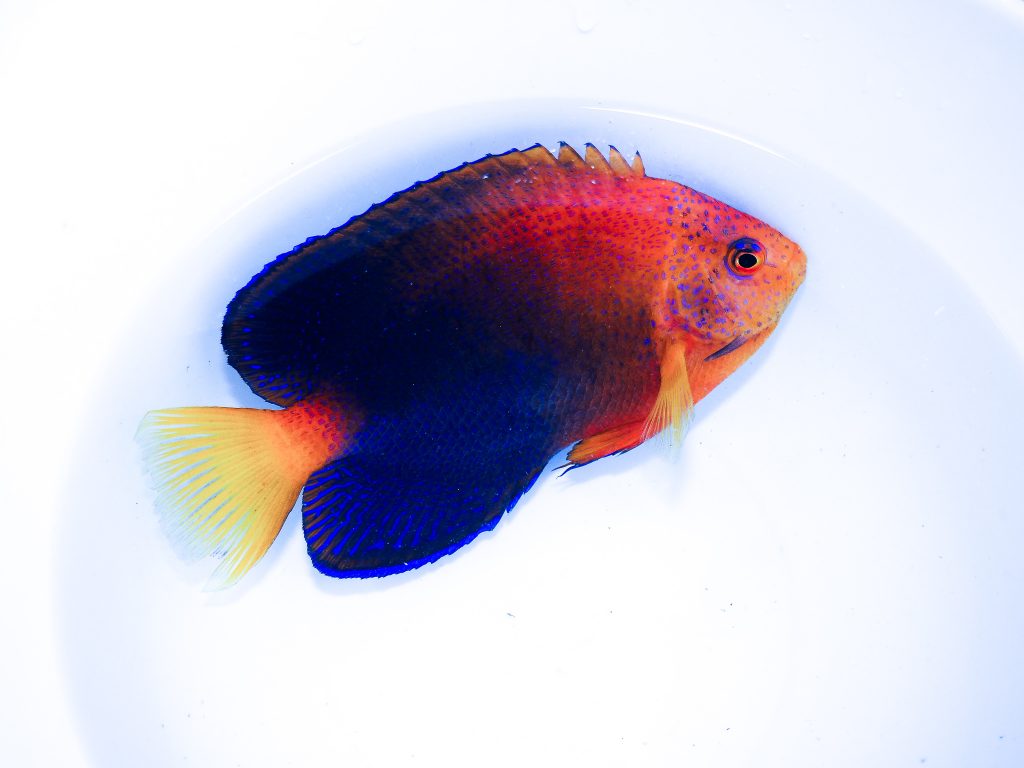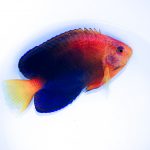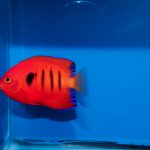Angelfish Dwarf Species
Angelfish Dwarf
Dwarf angelfish are members of the genus Centropyge, which encompasses approximately 35 species. They are typically small, brightly colored fishes, ranging in size from 1.5” to 6” in length. Flame angels (Centropyge loricula) are among the most commonly sold kept dwarf angelfishes.
Biology
Dwarf angelfish are found living in close proximity to the reef, often taking up residence in caves and amongst large coral colonies. They are omnivorous fish that spend their days grazing on algae, as well as catching zooplankton from the water column. Some species of dwarf angelfish are even known to be coprophagic, spending much of their time eating the fecal pellets of shoaling anthias and damsels!
Another very fascinating aspect of angelfish biology is their strategy for reproduction. They practice a reproductive strategy known as sequential protogynous hermaphroditism, in which fish are first transition from female to male. The sex of the fish is dependent upon the structure of the community or harem within which they are found. Most dwarf angelfish species are found living in harems with a single dominant male and several subdominant females. There is a clear hierarchy in these harems with the most dominant female exerting dominance over the next subdominant female, and so on. If the population structure changes and the male is lost either through mortality or emigration, the most dominant female will transition into male within a matter of days or weeks. Many dwarf angelfish species display visual differences in coloration and patterning between the sexes, allowing for visual determination of gender.
Captive Care
Dwarf angelfish are in many ways the ideal marine aquarium fish. They are considered a very hardy, do not attain an overly large size, and require only a minimal territory.
Due to their habit of living in close association with reef structures, as well as their relatively small overall size, dwarf angels are well suited to captivity. Smaller species such as the Cherub Angelfish (Centropyge cherub) will do well in pairs or harems in tanks as small as 20 gallons. Larger species may require larger tanks. It is important to consider the number of dwarf angels to be kept together. While they can be kept in small tanks as individuals, we encourage larger tanks when keeping them as a pair or harem.
Suggested Piscine Energetics Products
We suggest a diet based on Piscine Energetics Mysis, Piscine Energetics Calanus, Piscine Energetics Pellets (1mm and 2mm) and Piscine Energetics Saltwater Flakes.
What people are saying about PE:
After feeding my seahorses your mysis for about 3 months; they are fat and happy!!! they give me baby seahorses (at least 300 ) each 14 days... So I'm very satisfied of your mysis.The frozen mysis is about 70 per cent of their diet.
Yvan Charbonneau Quebec
I am keeping these Indian mudskippers -- very cute -- about 3-4 inches long. I've been feeding them frozen bloodworm, and decided to try them on mysis. I feed them in a "shallows" in the 150 I have set up for them. The minute the mysis hit the water they were on it, frozen and all. They gorged until their little bellies were almost bursting. I have yet to see an aquatic creature that does not go absolutely nuts over PE Mysis.
David Lass Massachusetts
I picked up my Mysis today and they arrived wonderfully. All the fish I fed them to, absolutely devoured them. They are my Frontosas new favorite food. All my Discus ate them up eagerly...heads and all!! I want to thank you again for your excellent service and product.
Pierre Brenton Nova Scotia
I have a large saltwater aquarium (220 gallons) with very expensive fishes and invertebrates. I tried to feed them with your PE Mysis and they really went crazy about it. Since that time, some of my fishes refuse any other product I offer them!








